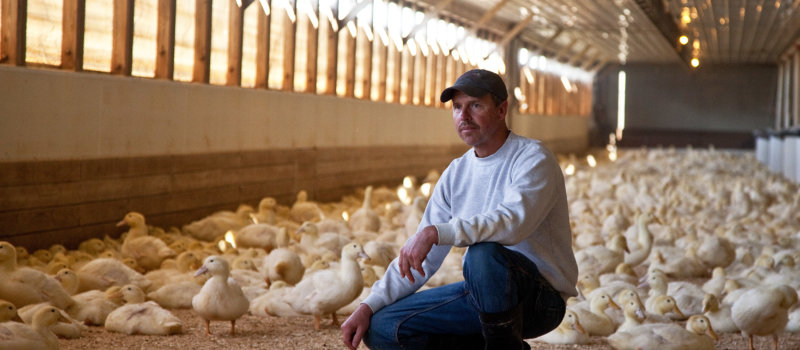Duck Farming: Is Free Range Really a Better Option?
POSTED: 09/05/2022
Consumers often want to know more about how their food is grown, but special claims on packaging are sometimes unclear and confusing for people who are not familiar with common farm practices, or the government standards used to qualify for the claim.
Maple Leaf Farms is sometimes questioned why our company does not raise free range poultry. The simple answer is this production method is at odds with many of our overarching goals such as food safety and biosecurity.
Many consumers may not understand that any poultry product can be labeled free range when the birds have continuous, free access to the outdoors for more than 51% of their lives. This doesn’t mean that the birds actually spend time outdoors. It simply means that they must be able to access it for a portion of their growing period. Often poultry in these facilities do not go outdoors unless forced to do so, making the outdoor access points more of an avenue for predators or disease carriers to enter the facility than a path for poultry to be raised outdoors.
By raising our ducks inside enclosed barns, our farmers can much more easily manage and control the birds’ growing environment, protecting them from predators and severe weather. Growing our birds indoors also helps us ensure they do not come in contact with or consume feed or water contaminated by wild birds, rodents and other disease carriers. While diseases like avian influenza are solely a bird health concern, others like e-coli and salmonella can be a human food safety risk.
What’s more, our farmers can make the barn environment more comfortable with shade, fans or supplemental heat. And they can more carefully manage waste that can be used for fertilizer on local cropland.
To learn more about Maple Leaf Farms and our farming practices, check out our Farm to Fork story and Trident Stewardship Program.
